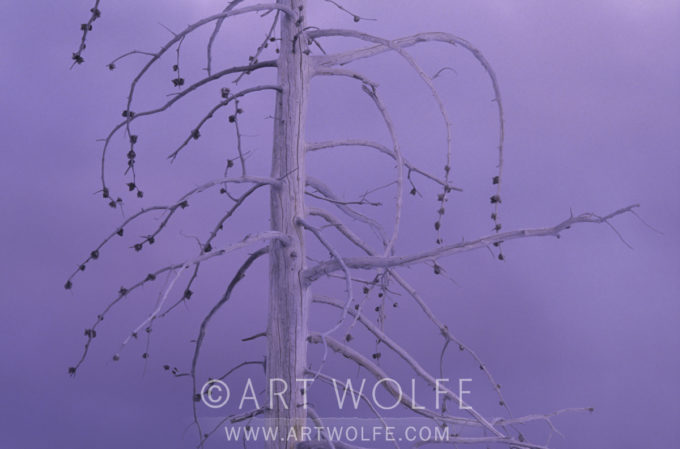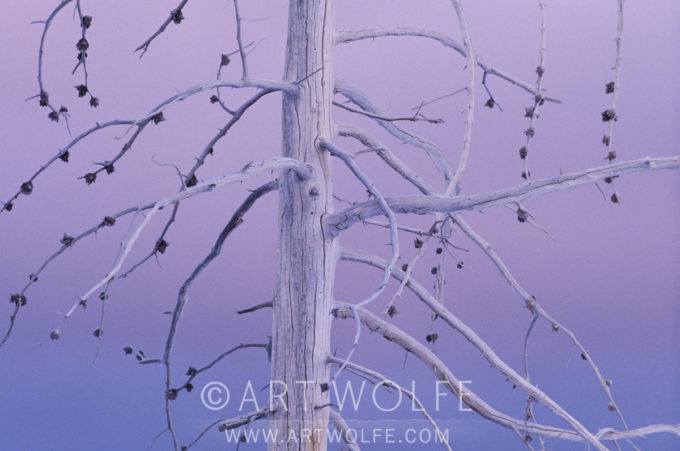Technique Tuesday: Making Order out of Chaos
The following is an excerpt from “The New Art of Photographing Nature”, and for more photos of the natural world, specifically magnificent trees world-wide, check out my latest recently published book “Trees: Between Earth & Heaven”!

MAKING ORDER OUT OF CHAOS
The elements that go into making a good image are basically the same for photography as for art, with one significant difference. An artist is faced with a blank piece of paper or canvas and has to construct a whole image by putting together the design elements–line, color, form, space, perspective–all of which he must create for himself. A photographer is given all these same elements in his viewfinder and basically subtracts the material he finds distracting and unessential to his statement.
Good photography is decision-making. It is not a passive process. The eye must learn to detect the essential and make it into a meaningful arrangement. Initially, nature appears random and chaotic. Our mind needs to make order out of chaos, to create relationships between things in order to understand them. When we look at something, we subconsciously focus our attention on some aspects and ignore others; we filter everything through our experience and our emotions.

The camera makes no such distinctions or evaluations. It records everything it sees. It is, therefore, the photographer’s responsibility to edit the camera’s view and select those elements to be captured. Understanding what goes into making a strong composition can improve a photographer’s personal statement. Freeman Patterson stated it beautifully when he wrote: “The camera always points both ways. In expressing the subject, you also express yourself.”
In a good composition, one has the distinct impression that nothing could be added to or subtracted from the picture. This sense of completeness–of balance–is the key. Balance does not, however, imply symmetry. Asymmetrical compositions can be balanced. We will explore these concepts as we move from chapter to chapter, discussing where to place the subject, how to make it stand out, how it relates to the other elements within the frame, and what creative options you have to work with to make a stronger photographic statement. There are some guidelines that can be followed, but none of them are so absolute they should be adhered to constantly.

Art Wolfe: “In the first image, the tree is silhouetted against a much lighter pink sky. In the second, it is against a part of the cloud closer in value to that of the tree, but the composition is still not quite there. In the third, the cloud is now in complete balance with the value of the dead tree, and I have recomposed the tree to fill out all four corners of the composition. To my eye, it is a more harmonious image.”
Martha Hill: “We are talking about very subtle distinctions here. Many people will like the first image over the third because of the luminous quality of the pink background. And it is clearly a matter of personal taste.
What makes the third photograph so appealing to me is the ethereal quality of the light. The background colors gradate very subtly from pink to lavender to blue in an even tonality, giving a sense of serene harmony and balance. The linear design of the tree branches is weighted slightly off-center, thus creating a delicate imbalance.
The spatial depth in the picture is also ethereal. As in an Asian painting, the sense of three-dimensional space is ever so subtly there, as the lighter tone of the tree brings it forward from the background. The branches reach to the edges of the frame, also bringing the tree to the frontal plane of the picture space. To me, this third version is shibui, which in Japanese describes something of an understated, highly refined elegance.”
For more insights and technique tips, check out “The New Art of Photographing Nature”!


Absolutely great lesson, and fabulous images. Thanks for sharing the wisdom, greetings from Brazil.